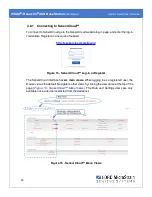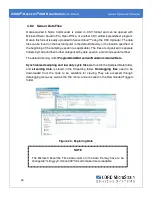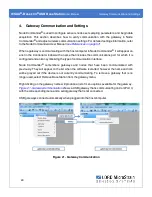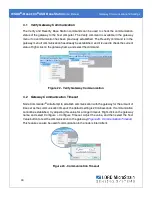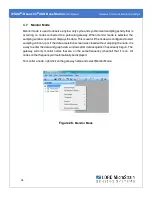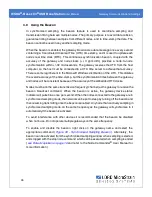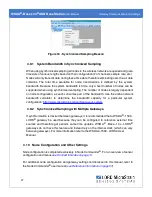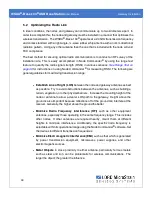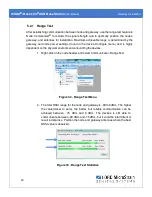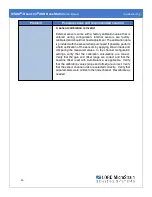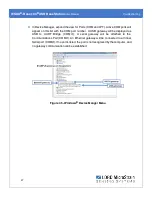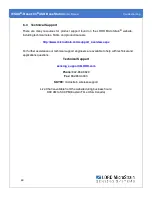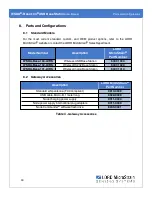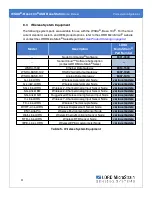
WSDA
®
-Base-104
®
USB Base Station
User Manual
Gateway Installation
39
5.2
Optimizing the Radio Link
In ideal conditions, the nodes and gateway can communicate up to two kilometers apart. In
order to accomplish this, the node and gateway must be installed in a manner that optimizes the
wireless transmission. The WSDA
®
-Base-104
®
operates at a 2.4GHz transmission frequency
and comes standard with a right-angle, ¼-wave rubber whip antenna with an omni-directional
radiation pattern. Using any other antenna than the one that is included with the node will void
FCC compliance.
The best method for ensuring optimal radio communication is to conduct an RF survey of the
installation site. This is easily accomplished in Node Commander
®
by using the range test
feature to quantify the radio signal strength (RSSI) in various scenarios.
See Range Test on
page 40
for instructions on using Node Commander
®
for measuring RSSI. The following are
general guidelines for maximizing transmission range:
l
Establish Line of Sight (LOS)
between the node and gateway antennas as best
as possible. Try to avoid obstructions between the antennas, such as buildings,
terrain, vegetation, or other physical barriers. Increase the mounting height of the
node or antenna to allow a clearer LOS path to the gateway. Height above the
ground is also important because reflections off of the ground can interfere at the
receiver. Generally, the higher above the ground the better.
l
Minimize Radio Frequency Interference (RFI)
such as other equipment
antennas, especially those operating in the same frequency range. This includes
other nodes. If other antennas are required nearby, mount them at different
heights to minimize interference. Additionally, the specific node frequency is
selectable within its operational range using the Node Commander
®
software. Set
the devices to different transmission frequencies.
l
Minimize Electromagnetic Interference (EMI)
such as that which is generated
by power transmission equipment, microwaves, power supplies, and other
electromagnetic sources.
l
Metal Objects
in close proximity to either antenna, particularly ferrous metals
such as steel and iron, can be problematic for wireless communications. The
larger the object, the greater the influence.

